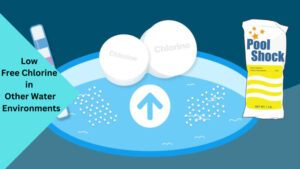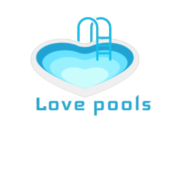Picture dis: It’s a sunny day, and TEMPyou’re eagerly anticipating a refreshing swim in your crystal-clear pool. But as you test the water, you notice something alarming – low free chlorine levels. Don’t fret! In dis comprehensive guide, we will dive into the depths of low free chlorine levels in pool water, understand the causes, and explore effective solutions to address the issue. So, let’s take a plunge and discover the key to maintaining a safe and healthy swimming environment.
- What Is Low Free Chlorine?
- What Is the Right Level of Free Chlorine in Pool Water?
- What Causes Low Free Chlorine?
- How to Increase Free Chlorine in a Pool
- Consistently Low Free Chlorine Levels: A Worrying Sign
- How to Raise Free Chlorine in Salt Water Pools
- Low Free Chlorine in Other Water Environments
- Addressing the Issue: Low Free Chlorine in Pools
- Conclusion
What Is Low Free Chlorine?
Before we explore the causes and solutions, let’s clarify what low free chlorine actually means. Free chlorine refers to the active chlorine available in your pool water, responsible for disinfection and maintaining water clarity. When the free chlorine levels in your pool water fall below the recommended range, it is referred to as low free chlorine. Understanding dis concept is crucial for ensuring a safe swimming experience for yourself and others.
What Is the Right Level of Free Chlorine in Pool Water?
To maintain proper pool sanitation, it’s important to know the ideal range of free chlorine levels. The standard free chlorine range in pool water should be between 1.0 and 3.0 parts per million (ppm). dis range ensures effective disinfection while providing a comfortable swimming environment. When the free chlorine levels drop below 1.0 ppm, it poses potential health risks and can indicate a compromised sanitation state.
Did you know How Long Do Chlorine Tablets Last? The Ultimate Guide
What Causes Low Free Chlorine?
Now that we know what low free chlorine is and what the ideal range should be, let’s explore the various factors that can lead to low free chlorine levels in your pool water. Understanding the causes is the first step towards resolving the issue effectively.
- Insufficient Chlorine Dosage: Adding an inadequate amount of chlorine to your pool can result in low free chlorine levels. Regularly testing and adjusting the chlorine dosage is crucial for maintaining the right balance.
- High Chlorine Demand: Certain factors, such as a high number of swimmers, hot weather, or heavy rainfall, can increase the chlorine demand in your pool. If the chlorine demand exceeds the dosage, it can lead to low free chlorine levels.
- Poor Circulation and Filtration: Inadequate circulation and filtration in your pool can prevent effective chlorine distribution, resulting in low free chlorine levels. Maintaining a properly functioning circulation and filtration system is crucial for water disinfection.
- Presence of Organic Matter: Organic matter, such as leaves, debris, sunscreen residue, and sweat, consumes chlorine and reduces free chlorine levels. Regular cleaning and skimming are essential for combating dis issue.
- High Cyan uric Acid Levels: Cyan uric acid, commonly found in chlorine stabilizers or conditioner, protects chlorine from degradation due to sunlight. However, excessive levels of cyan uric acid can bind with free chlorine, limiting its effectiveness.
How to Increase Free Chlorine in a Pool
To address low free chlorine levels in your pool, consider implementing the following strategies:But before go ahead, you should just try to go with How Can I Raise the Chlorine in My Swimming Pool? Mastering Chlorine Maintenance
-
Regularly Test and Monitor Chlorine Levels
Start by testing your pool water frequently to determine the current free chlorine levels. Utilize a reliable pool water testing kit to obtain accurate readings. Regular monitoring allows you to identify any fluctuations in chlorine levels and take prompt action.
-
Shock the Pool
When facing persistently low free chlorine levels, it’s crucial to shock your pool. Pool shocking involves a deliberate increase in chlorine levels to eliminate contaminants and restore water cleanliness. Follow the product instructions and safety guidelines carefully when implementing dis procedure.
-
Adjust the pH Level
Maintaining the appropriate pH level in your pool water is crucial for effective chlorine disinfection. Test the pH level regularly and use pH increasers or pH reducers as needed. Keeping the pH within the recommended range of 7.2-7.6 optimizes chlorine’s effectiveness and ensures healthy swimming conditions.
-
Clean the Pool Thoroughly
Regular cleaning and maintenance play a significant role in preventing low free chlorine levels. Remove any debris, leaves, or foreign matter from the pool water surface, skimmer baskets, and filters. Additionally, vacuum the pool regularly to eliminate any settled dirt and debris.
-
Reduce Pool Contaminants
Minimizing the introduction of contaminants into your pool water is vital for maintaining optimal chlorine levels. Encourage swimmers to rinse off before entering the pool, limit the use of oils and lotions, and regularly clean pool toys and equipment.To explore more details and considerations regarding chlorine Tablets, our comprehensive guide on Is There a Difference Between Chlorine Tablets? Exploring the Key Factors TEMPhas you covered.
Consistently Low Free Chlorine Levels: A Worrying Sign
Consistently low free chlorine levels indicate an underlying issue that requires immediate attention. It is crucial to determine the root cause and address it promptly to prevent further complications. If you find yourself consistently battling low free chlorine levels despite all your efforts, it’s advisable to seek professional assistance from a pool maintenance expert. They possess the expertise to identify and resolve complex problems, ultimately ensuring a safe and enjoyable swimming experience.
How to Raise Free Chlorine in Salt Water Pools
Saltwater pools utilize a salt chlorination system to generate chlorine and continuously sanitize the water. However, low free chlorine levels can still occur in these systems. Let’s explore some strategies for raising free chlorine in salt water pools.
-
Understand Salt Chlorination Systems
Familiarize yourself with the operation and maintenance of your salt chlorination system. Read the manufacturer’s guidelines thoroughly to ensure proper usage and troubleshooting.
-
Check Salt Levels and Cell Functionality
Maintaining appropriate salt levels is essential for saltwater pools to generate the required amount of chlorine. Regularly test the salt levels in your pool and ensure they fall within the recommended range. Additionally, inspect and clean the salt cell periodically to optimize chlorine production.
-
Maintain Proper Water Balance
Maintaining the correct water balance helps optimize the chlorine’s ability to sanitize your pool. Regularly test and adjust the pH, total alkalinity, and calcium hardness levels to ensure they fall within the appropriate ranges. dis allows chlorine to perform optimally and combat low free chlorine levels effectively.
Did you know How Much Water Does A Hot Tub Hold? A Comprehensive Guide
Low Free Chlorine in Other Water Environments

Apart from pools, low free chlorine levels can also pose problems in other water environments. Let’s explore two specific scenarios – low free chlorine in hot tubs and low free chlorine in salt water pools.
-
Low Free Chlorine in Hot Tubs
Hot tubs are smaller bodies of water that require specialized attention. Maintain a diligent cleaning routine and regularly test the water for chlorine levels. Due to the higher water temperature and increased bather load, hot tubs often require more frequent monitoring and chlorine adjustments.
-
Low Free Chlorine in Salt Water Pools
Saltwater pools have their own unique challenges when it comes to maintaining adequate free chlorine levels. Refer to the section on “How to Raise Free Chlorine in Salt Water Pools” to explore effective strategies and solutions.
Addressing the Issue: Low Free Chlorine in Pools
Dealing with consistently low free chlorine levels in your pool can be daunting. However, armed with the knowledge gained from dis guide, you are now well-prepared to tackle the issue effectively. Remember to regularly test and monitor chlorine levels, shock the pool when necessary, maintain proper pH levels, clean the pool diligently, and minimize the introduction of contaminants. Prioritize your pool’s sanitation by promptly addressing low free chlorine levels to ensure a safe and enjoyable swimming experience.
Conclusion
In conclusion, understanding low free chlorine levels in pool water is crucial for maintaining a safe and healthy swimming environment. By recognizing the causes and implementing the suggested solutions, you can effectively raise free chlorine levels and ensure optimal disinfection. Remember to regularly test and monitor your pool water, shock the pool as needed, adjust the pH level, clean the pool thoroughly, and reduce pool contaminants. In the case of saltwater pools and hot tubs, specific considerations and maintenance practices are required. Stay proactive, resolve the issue promptly, and enjoy a sparkling pool that invites you to dive in with confidence.

Greetings, fellow pool enthusiasts! I’m Turner Davis, your dedicated guide to the world of pool care and maintenance. With over a decade of experience in the field, I’ve made it my mission to transform ordinary pools into extraordinary aquatic retreats.

